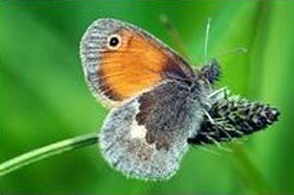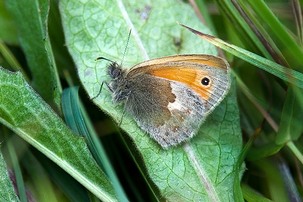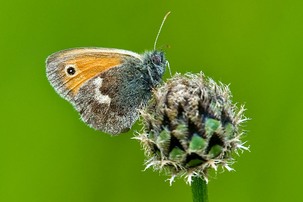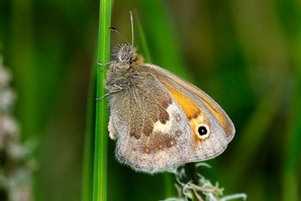

Biodiversity
Action
Plan
Small Heath: Small Heath is a small inconspicuous orange and pale grey butterfly; it flies characteristically with a drunken flight pattern, erratically, low and fast.
Small Heath is mainly found in Barnsley on open well-drained grassland and heathland. Comment on scarcity/distribution
Small Heath Coenonympha pamphilus
UKBAP Priority Species
S41 Species of Principal Importance
Red List: Near Threatened
BC Conservation Priority: HIGH.
Protection
As a species of principal importance, the presence of the Small Heath is required to be taken into consideration for conservation by any public body when performing its functions. This includes avoiding sites with a colony for development and promoting their conservation and enhancement.
In Barnsley a site with a Small Heath colony is of sufficient priority to be designated a Local Wildlife Site which have a presumption against development requiring planning consent.

Small Heath is mainly found in Barnsley on open well-drained grassland and heathland. It benefits from sunny, sheltered areas and patches of bare ground.
It can be found on road verges and farm tracks as well as waste ground, old quarries, pit stacks, disused workings and railway embankments and roadside verges. It can even occasionally be found in gardens and woodland glades.
The Small Heath’s underside wing shows a visible eye-spot surrounded by a pale ring at the tip; its hindwing is banded with brown, greys and cream.
There are two generations a year, with adults usually flying from early May until late July and a second brood from early August to mid October. Adults usually live only 7 days approx. Eggs are laid low down in the sward.
Conservation: Maintain unimproved grassland with no fertiliser enrichment and with access to larval foodplant grasses and nectar rich flowers and patches of bare ground in sunny locations.
Suitable habitat conditions occur where larval food plants such as fine-leaved grasses, especially Sheep’s Fescue, meadow grasses and bents are found.
Competing males gather in ‘leks’ in open grassland close to land-marks such as bushes or trees.


For more information
UK Butterflies: Small Heath
Butterfly Conservation: Small Heath
Local Priority Habitats:
Open Mosaic on Previously Developed Land, Unimproved or semi-improved grassland, Verges, Lowland Heath, Built Environment - brown-field sites.
Potentially Mixed Deciduous Woodland Rides; Built Environment - gardens.

Small Heath butterfly